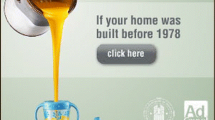Abstract
The question, “What norms are appropriate for the evaluation of the probative merits of visual arguments?” underlies the investigation of this paper. The notions of argument and of multimodal visual argument employed in the study are explained. Then four multimodal visual arguments are analyzed and their probative merits assessed. It turns out to be possible to judge these qualities using the same criteria that apply to verbally expressed arguments. Since the sample is small and not claimed to be representative, this finding can at best be regarded as suggestive for the probative assessment of multimodal visual arguments in general.
Similar content being viewed by others
Notes
See my “Argument and Its Uses” in (Blair 2012: 185–195) for a fuller account and defence.
I have heard colleagues use the terms ‘mixed modal’ and ‘joint’ to describe partly verbal and partly visual arguments, and I personally prefer ‘hybrid’; but the term ‘multimodal’ seems to be catching on, so I defer. Confusion lurks, however, because Michael Gilbert some time ago introduced the term ‘multimodal argumentation’ to denote something entirely different (Gilbert 1997: 75–88).
Thanks to Leo Groarke for the concept of a visual flag.
The visual argument I attributed to the 1996 Benetton advertisement arguing against racism in The New Yorker magazine special issue on racism in America (discussed in Blair 1996) is an example.
The examples were downloaded from the Visual Arguments Examples website in February 2012 (however the labels or “titles” are all added by me):
For Finocchiaro, “Reasoning is linguistically expressed in arguments” (2013: 18).
I say “normally,” because in some cases, such as discussing the sequence of reasoning in the solution of a complex differential equation or a deduction in a formal language, it is preferable to use the relevant symbolic notation.
What is meant by the “park brake” is most plausibly taken to be the handbrake or pedal-operated brake—the “emergency brake”—that is connected by a cable to the brake mechanism. But some with automatic transmissions might consider leaving the transmission in “Park” sufficient to prevent their vehicle from “running away” and some with manual transmissions might consider leaving the vehicle in gear sufficient. These people would challenge the stated premise, and so should find the argument unconvincing.
Thus the example seems to be a counterexample to the view that every argument is or must be a response to a difference of opinion and to the view that arguments necessarily are attempts to persuade.
Thanks to an anonymous reviewer for this point about how the montage carries a force so that the viewer experiences the labels as referring to him or her.
I owe this possible interpretation, which strikes me as eminently reasonable, to an anonymous reviewer.
I am unaware of any research investigating visual illative indicators—visual cues indicating the presence of argument corresponding to the “thus,” “therefore,” “it follows that,” “since,” “because,” etc. of verbal texts.
I borrow the terms ‘force’ and ‘vivacity’ from Hume (1739) (Selby-Bigge (Ed.), pp. 105, 629).
References
Blair, J.Anthony. 1996. The possibility and actuality of visual arguments. Argumentation and advocacy 33(1): 23–39.
Blair, J.Anthony. 2012. Groundwork in the theory of argumentation. Dordrecht: Springer.
Finocchiaro, Maurice A. 2013. Meta-argumentation. London: College Publications.
Gilbert, Michael A. 1997. Coalescent argumentation. Mahwah: Lawrence Erlbaum Associates.
Govier, Trudy. 2001. A practical study off argument, 5th ed. Belmont: Wadsworth.
Groarke, Leo. 1996. Logic, art and argument. Informal Logic 18(2&3): 105–129.
Hitchcock, David. 2013. Appeals to considerations. Informal Logic 33(2): 195–237.
Hume, David. 1739. A treatise of human nature. Ed. L.A. Selby-Bigge. Oxford: The Clarendon Press, 1973.
Kjeldsen, Jens. 2013. Virtues of visual argumentation. In Proceedings of the 10 th OSSA Confererence on Argumentation, eds. D. Mohammed and M. Lewiński. Windsor, ON: OSSA, CD-ROM.
Larvor, Brendan. 2013. What philosophy of mathematical practice can teach argumentation theory about diagrams and pictures. In The argument of mathematics, ed. Andrew Aberdein, and Ian Dove, 239–253. Dordrecht: Springer.
Leclercq, Bruno. 2012. Arguing with formal tools. In Inside arguments: logic and the study of argumentation, ed. Henrique Jales Ribero, 269–297. Cambridge: Cambridge Scholars Publishing.
O’Keefe, Daniel J. 2002. Persuasion, theory and research, 2nd ed. Thousand Oaks: Sage.
Acknowledgments
My warm thanks to Jens Kjeldsen and Paul van den Hoven for many constructive suggestions of ways to shorten and improve an earlier draft of this article, and to Argumentation’s anonymous reviewer for numerous much appreciated suggestions for improvement and corrections.
Author information
Authors and Affiliations
Corresponding author
Rights and permissions
About this article
Cite this article
Blair, J.A. Probative Norms for Multimodal Visual Arguments. Argumentation 29, 217–233 (2015). https://doi.org/10.1007/s10503-014-9333-3
Published:
Issue Date:
DOI: https://doi.org/10.1007/s10503-014-9333-3




